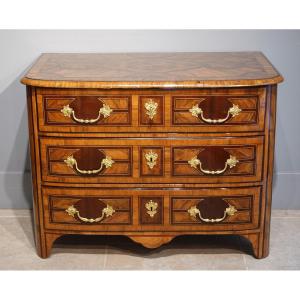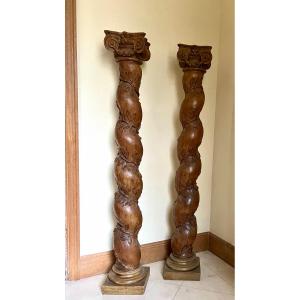It rests on a deeply molded round base supported by three “ball” feet.
The upper shelf is also surrounded by a large molding.
Dimensions
H. 89 cm x L. 44 cm
France
Blonde walnut
17th century
Our wink
The wigs were stored on a wig stand, a sort of large ceramic, glass or metal (silver) ball, carried on a foot of varying height (30 to 40 cm).⠀
The wig stand could be placed on saddles with twisted bases like the one shown here.
Initially intended to imitate natural hair, the wig became a court-dictated fashion and an important status symbol. This fashion, launched in France by Louis XIII around 1620, quickly spread to other European countries under the reign of Louis XIV and lasted until the French Revolution. The 17th century was undoubtedly the golden age of wigs: anyone who wanted to pass for a gentleman had to include this accessory in their ceremonial outfit. Wigs then were extremely complicated, imposing and powdered to be white.
The finest models were already made with real human hair, with horsehair being a cheaper alternative.



































 Le Magazine de PROANTIC
Le Magazine de PROANTIC TRÉSORS Magazine
TRÉSORS Magazine Rivista Artiquariato
Rivista Artiquariato